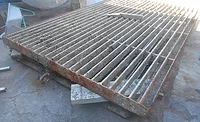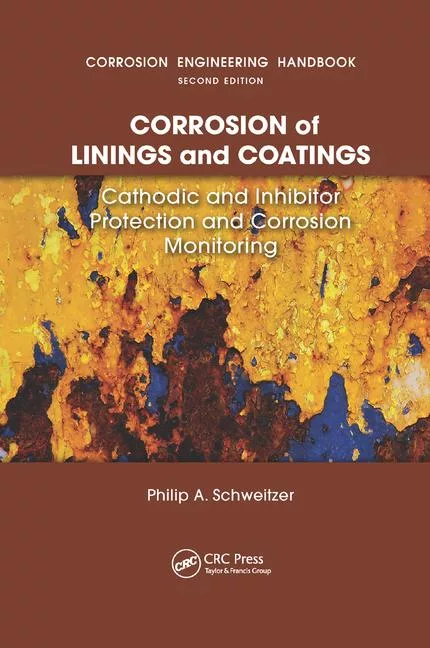Effective Protection Against Graffiti and More

Sometimes it’s just scribbles, sometimes it’s full-size murals in all the colors of the rainbow: graffiti. Some of the sprayers engaging in this mischief are tempted because it’s forbidden, others do it to gain kudos from their peers. Not everyone is impressed, however. Graffiti causes immense damage to cities, communities and homeowners. Removing the aggressive spray paint is extremely costly, damages the building fabric and can cause the entire property to drop in value. WACKER has developed a new, highly effective anti-graffiti product, which permanently protects surfaces with a thin film of silicone. Graffiti and stickers can be readily washed off with just cold water.
It’s a scenario replicated in cities all around the world: under cover of darkness, a graffiti artist whips out a spray can and gets to work. The pitch-black paint etches its way mercilessly into the masonry. The fine pores of the sandstone soak up the acrylic paint like a sponge. After a few minutes, the culprit has disappeared – leaving a personal memorial on what was once an immaculate natural stone wall.
“In porous masonry, the paint can penetrate down to a depth of about one millimeter,” says Prof. Helmut Weber, founder of the Competence Center for Building Protection and Renovation in Ebersberg near Munich, Germany. “It literally clings to rough sandstone surfaces and is highly tenacious,” notes the construction expert. A great deal of water, special chemicals and a high-pressure cleaner are needed to remove the graffiti. Even so, the outlines of the inscriptions can often still be seen afterwards. The only remedy in such cases is to resort to sandblasting. “But that, of course, strips away the building fabric,” says Weber. “If you do that after every graffiti attack, the building itself will eventually suffer.”
Year after year, graffiti and wild posters inflict huge damage on public buildings, bridges, underpasses and house walls. They are not only time-consuming and expensive to eliminate. They lower the value of these structures, too. The Deutscher Städtetag (Association of German Cities) estimates the damage done in Germany at 200 million euros every year. In the United States, the Department of Justice puts the annual cost at some twelve billion dollars. The cost of removing graffiti and posters in Germany alone is believed to amount to more than 500 million euros.1
“Spray paints are becoming cheaper and thus affordable for everyone. Consequently, the spotlight is increasingly being turned on technologies that can provide buildings with long- lasting protection against graffiti and other defacements”, explains Marianne Kreuzpointner, a marketing expert in construction chemicals at WACKER’s production site in Burghausen, Germany. “We’re receiving more and more requests from customers about whether we supply products that offer permanent surface protection and enable graffiti to be removed for a low cost.”
One such WACKER product is already available in the USA. Applications engineer Dr. Hartmut Ackermann and his research colleagues have taken this pioneering technology and enhanced it further. “Like most anti-graffiti systems, our new product forms a continuous film on the substrate, where it acts as a barrier between the substrate and the spray paint”, says Ackermann. “The graffiti is unable to develop permanent adhesion to the silicone and so can be removed with cold water and a cloth or a high-pressure cleaner”, explains the chemist.
Tests in the Upper Bavarian town of Burghausen prove just how well the product works. An underpass there for cyclists was treated with the new anti-graffiti coating. “We deliberately chose a concrete wall that is a favorite target for graffiti,” says Albert Günthner, head of the department responsible for the town’s upkeep. “The sprayers usually slip in here unnoticed and have plenty of time to create memorials.”
When the 20-square-meter test area was cleaned, Günthner witnessed for himself how effective the anti-graffiti protection is. “Before this, we had to use sandblasters to clean the defaced concrete walls, because the paint penetrates so deeply into them. What’s more, the frequent cleaning was exacting a heavy toll on the structural fabric. Thanks to this new anti-graffiti product from WACKER, all we need now is a high-pressure cleaner and cold water. It is very impressive”, emphasizes Günthner.
For users of anti-graffiti agents, it is particularly important that the products are not harmful to health and that they contain no hazardous substances if possible. That is exactly what makes WACKER’s new product so special. “We worked for a long time to find the right composition. The formulation that we have now developed provides optimum adhesion to the mineral substrate and is also designed to allow graffiti to be removed easily and cleanly without residues”, explains Ackermann. The researchers addressed the safety aspect by basing the product’s adhesion promoter and crosslinker on harmless silanes – not on an oxime and tin crosslinker.
The active-agent concentrate has the consistency of honey and should be diluted with a solvent before use. “Manufacturers of building protection agents can also add pigments to make colored coatings”, says Kreuzpointner. The active-agent content, viscosity and color are infinitely adjustable. Applying the anti- graffiti coating is also a cinch: brush, roller or spray will do. The protective film makes the colors of the substrate appear more intense and adds a hint of gloss to the surface.
The anti-graffiti coating bonds especially well to concrete, brick, plaster, marble and limestone. If a special primer is used, it can even protect glass and metal. In the presence of atmospheric moisture, the thin film cures from the outside in. The silicone molecules anchor themselves in the masonry by forming covalent bonds with some of the mineral components. They furthermore crosslink with each other to form a stable, but elastic, protective layer.
“The protective film is about 0.2 millimeters thick and can be stretched by up to 160 percent before it tears. This allows cracks and irregularities to be bridged effectively, while the substrate is protected from damage by the paint”, explains building protection expert Ackermann. The extensibility of the silicone is also important for another reason: building materials are always under tension. They expand during the day as the wall warms up and contract at night when it gets cold. This is a constant challenge for the protective coating. Another is posed by heat and UV light. The silicone must remain transparent even under a scorching sun and must not turn yellow or embrittle.
Under normal conditions, the protective coating cures to a tack- free surface in two to four hours. After six hours, it is already firm enough to be cleaned. “A commercially available high-pressure cleaner can then be used to remove graffiti without any problems”, says Ackermann. “You don’t generally need to resort to any special chemicals. In fact, the protective coating is so dirt resistant that you basically only need a sponge and cold water to remove all traces from the surface.” Even stickers and posters cannot find a hold on the anti-graffiti coating. In most cases, they can easily be pulled off by hand.
Laborious, expensive cleaning and remediation are now history. Tests at WACKER in Burghausen show that the anti- graffiti film is still as good as new even after having been cleaned 20 times. Experts therefore believe that the protection will endure for years – and probably decades if the mischief-makers do not strike too frequently.
Graffiti adheres so poorly to the silicone film because of the particularly low surface tension of the silicone. Surface tension is the force that enables some insects to walk on water and is also why water forms droplets. Spray paints have a much higher surface tension than the silicone coating and so have difficulty holding on. “A reliable anti-graffiti effect can be obtained with 200 to 250 grams of our silicone product per square meter”, explains Kreuzpointner. “The coating is permeable to water vapor and therefore much more breathable than its polyurethane-based counterparts, which are used as permanent anti-graffiti protection as well”, says the WACKER expert.
For building expert Weber, that is the salient point: “Moisture transport must not be hindered, especially in the case of coarse- pored building materials such as sandstone, because otherwise the growth of microorganisms would be promoted or parts of the surface could spall.” A chemist and former WACKER employee, the independent technical assessor has been developing building maintenance concepts for many years. “Graffiti prevention is becoming more and more important, especially for natural stone. These surfaces are very delicate when left untreated, and suffer massively when subjected to frequent cleaning”, says Weber. “Proper protective measures can ensure that the value of buildings is enhanced over the long term. That’s why we are increasingly incorporating anti-graffiti protection into our concepts.”
The extent to which cities and communities are afflicted by graffiti varies greatly from region to region, but one thing is for sure: graffiti attacks are on the rise all around the world. “The need for effective anti-graffiti protection is increasing,” explains Kreuzpointner. According to a US study2 from 2015, the global market for dirt-resistant coatings is worth 2.3 billion US dollars. Experts forecast annual growth of around 6.6 percent through to 2026, when the market will be worth 4.6 billion US dollars. “All major paint makers are currently trying to get to grips with the graffiti problem,” says Kreuzpointner. “That’s why our customers are so interested in our technology.”
With or without anti-graffiti protection, one thing is paramount: unwanted graffiti, posters and other defacements should be removed as quickly as possible. After all, once a building has been defaced, it doesn’t take long for copycats to appear on the scene.
For further information on anti-graffiti technology from WACKER, visit website www.wacker.com.
- Sources: Haus & Grund, US Department of Justice, markets&markets
By WACKER
Looking for a reprint of this article?
From high-res PDFs to custom plaques, order your copy today!







